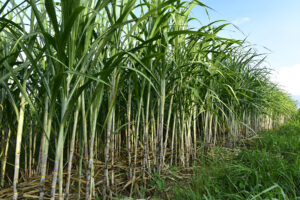Sugarcane energy major São Martinho invests €47.4m in biomethane plant

Produced through the anaerobic digestion of vinasse, a residue from ethanol production, the plant will process 100% of the vinasse generated at the Santa Cruz unit, located in Américo Brasiliense, in the interior of São Paulo (SP), to produce approximately 15 million cubic meters of biomethane per harvest.
At this volume, by replacing the consumption of fossil natural gas, São Martinho's use of biomethane has the potential to prevent the emission of up to 32,000 metric tons of greenhouse gases.
This quantity is equivalent to 91,000 truck trips between the cities of São Paulo and Rio de Janeiro per year or 250 trips per day, according to the firm.
With an approximate investment of R$250 million (€47.4 million), the new venture will commence its operations in the second half of 2025.
It is part of a master plan devised by the company to fully explore its potential for biomethane generation from vinasse.
The first step, initiated at the Santa Cruz unit, accomplishes 20% of this ambition.
The remaining 80% is under evaluation, considering the competitive advantages and unique characteristics of its other three units: São Martinho and Iracema in the interior of São Paulo (SP), and Boa Vista in the interior of Goiás (GO), said the firm.
"The Santa Cruz biomethane plant marks São Martinho's entry into the renewable natural gas market and strengthens our commitment to effectively contribute to the energy transition towards a low-carbon economy," said Fabio Venturelli, president of São Martinho.
"This new venture aligns with our strategic plan, enabling us to increase profitability per cultivated hectare, generating more value for our shareholders while ensuring the production of low-cost renewable carbon.
"The biomethane production begins with 20% of our potential, connected to the distribution system via pipelines and capable of providing a renewable alternative to a region with high fossil fuel consumption."


















